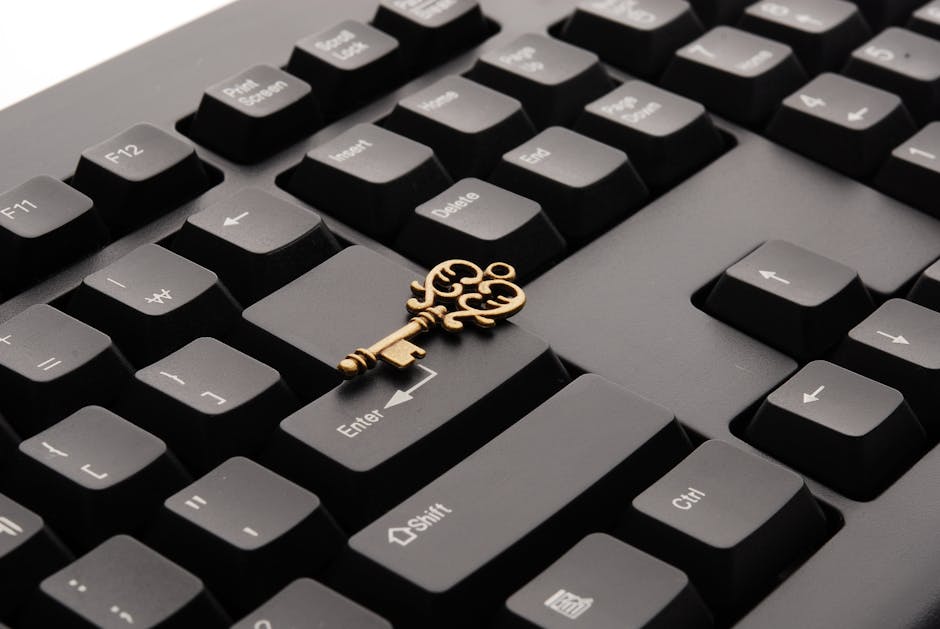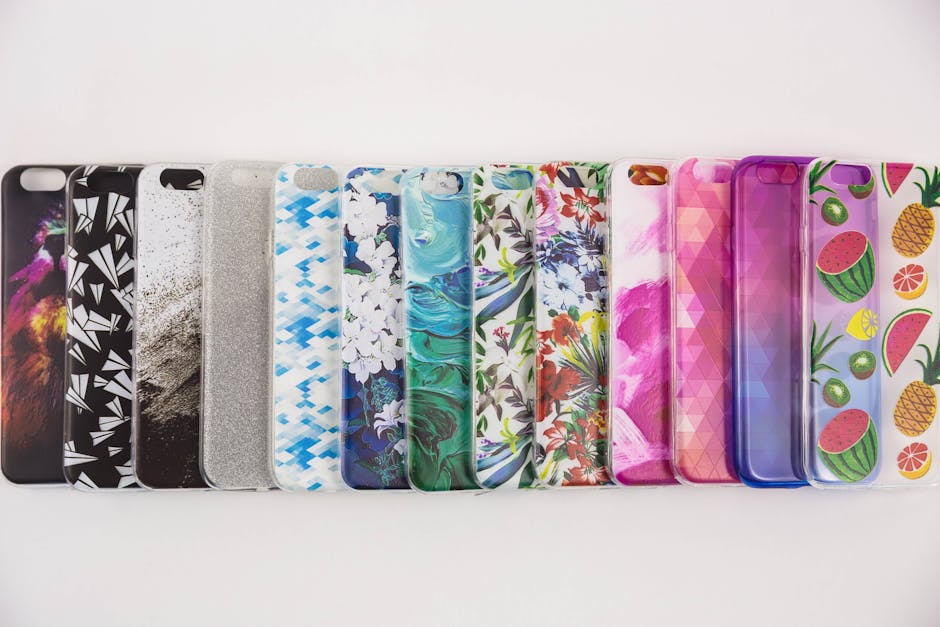The Sound of Safety: Innovate Your Security with High-Tech Gadgets
As technology advances, so does our ability to create solutions that enhance personal safety—an innovation that’s never been more critical. With anxiety levels surging worldwide due to uncertainty and concerns about safety, high-tech innovations in personal security gadgets have emerged as a beacon of hope. These gadgets not only provide physical security but also reduce anxiety by fostering a sense of control in uncertain environments. Let’s delve into how these cutting-edge devices play a vital role in alleviating worries and shaping our lives.
Security Anxiety: The New Normal

In today’s fast-paced world, the notion of safety often feels precarious. News stories and social media amplify sentiments of fear and uncertainty, contributing to what many call "security anxiety." Whenever one hears a quiet noise at night or is in unfamiliar territory, there might be a nagging fear creeping in. Given this backdrop, personal security gadgets have become an essential part of our lives, offering not just hardware that aids in protection but also emotional solace.
The Evolution of Gadgets for Personal Security

The landscape of personal security gadgets has significantly transformed over the last decade. From basic alarms for homes to sophisticated surveillance systems integrated with artificial intelligence, we now wield technology that can predict and respond to threats. For instance, the rise of AI-enabled cameras enhances surveillance as they can identify unusual behavior and alert homeowners in real-time.
Smart Locks: Securing Your Space Effortlessly

A prominent example is smart locks, which have revolutionized the way we secure our homes. These locks enable users to access their homes through smartphones, biometrics, or numeric codes, vastly improving security and convenience. Such devices serve as both a deterrent to potential intruders and a source of reassurance for homeowners.
Furthermore, many models come equipped with tamper alerts which notify users of unauthorized attempts to access their property. This instant feedback mechanism helps in reducing anxiety around home security, allowing individuals to feel at ease even when they are away. Not only are they a modern solution to an age-old problem, but smart locks also seamlessly integrate into the smart home ecosystem, further enhancing the overall security.
Wearable Technology: Personal Safety at Your Fingertips

The advancement of wearables has also left a remarkable impact on personal security. Smartwatches and fitness trackers are evolving beyond just health monitoring; they now include safety features such as fall detection and emergency SOS messaging. These features can easily alert emergency services or designated contacts in times of need, offering a direct line to help.
Imagine you’re out for a run in a park. If you trip and fall, your smartwatch automatically detects the event and prompts you to acknowledge your safety. If you don’t respond, it can send an SOS signal. Such technology not only fosters a sense of independence but also alleviates concerns about personal safety while exercising alone.
Companion Devices: The Emotional Connection to Safety

Beyond function, the emotional aspect of security gadgets plays a crucial role in reducing anxiety. Companion devices, or personal safety gadgets that accompany individuals through their day, have become popular in recent years. These devices range from simple alarms that can be set off with a quick button press to advanced models that utilize artificial intelligence to analyze surroundings and provide assistance accordingly.
When Gadgets Speak: Emotional Tech

These companion devices often come equipped with features that allow them to “speak” to users, offering encouragement or reminders which can strengthen emotional well-being. For instance, the emergence of emotional recognition technology, as explored in our article on gadgets for emotion recognition, indicates a growing trend where not only security is prioritized but also emotional health. These devices can analyze a person’s emotional state and alert them if they might need to take some time to decompress or seek help.
Home Security Systems: Integrating Tech for Safety

Home security systems have made substantial advancements, moving from simple cameras to expansive networks that track movement, temperature, and even environmental changes. Technological innovations have allowed these systems to become more intuitive, often integrating with smart assistants to offer seamless control through voice commands.
Predictive Technologies and Advanced Alerts

Predictive analytics can now alert homeowners before incidents happen based on hacking trends or unusual activity patterns. This level of foreknowledge equips users with tools to prepare for potential threats, thus calming anxieties by promoting a proactive rather than reactive stance to safety.
Moreover, integrating smart sensors into homes can help detect environmental hazards such as gas leaks, fires, and even flooding. This combination of security, predictiveness, and warning systems creates an environment that provides comfort, especially for families with children or elderly individuals.
Personal Safety Apps: Your Phone as a Guardian

In the digital age, smartphones have emerged not just as communication devices but also as powerful tools for personal safety. Numerous applications are available that empower users to share their locations, send emergency alerts, and connect with local authorities if they feel threatened. One can easily find apps specifically designed for women’s safety, providing services that can discreetly alert contacts or law enforcement in threatening situations.
Community Safety Gadgets: Building Trust Among Neighbors

Safety is not solely an individual concern; it's a communal one. That’s why community-oriented security gadgets have gained traction. Devices like doorbell cameras, neighborhood watch systems, and community apps have fostered a sense of shared responsibility for safety. When neighbors are connected through technology, they can look out for each other—a powerful antidote to anxiety.
Such gadgets bridge the gap between individual security efforts and collective vigilance, creating a framework within which everyone emphasizes both personal and community safety.
Education and Awareness: Feeling Secure

Each gadget is a part of a modern toolkit, but awareness and education on how to use them effectively are essential. Buying the latest high-tech security gadget may not automatically translate to improved safety if users are untrained. Therefore, workshops and community sessions focus on educating individuals about these tools.
As technology changes, keeping up with newer devices through classes or even online tutorials can be beneficial. Such educational resources not only empower individuals with knowledge but also enhance their confidence and reduce anxiety surrounding personal safety as they learn how to effectively integrate technology into their lives.
Building Resilience Through Innovation

While high-tech gadgets serve as immediate solutions to safety concerns, it's crucial to remember that technology alone cannot solve anxiety. Building resilience requires an understanding of personal risks, community involvement, and emotional well-being.
Combining gadgets with mindfulness practices, such as strategies discussed in our article on noise-canceling technology, can enhance personal safety as individuals learn to regulate their anxiety responses. This holistic approach not only invites an innovative view of safety but also broadens how we tap into technology’s potential.
Future Trends: The Intersection of Safety and Emotional Wellness
The direction of personal security gadgets is leaning towards an intersection of safety and emotional wellness. With emerging wearable tech focusing on biometric feedback, devices will soon not only monitor safety statistics but also understand the user’s emotional state. This can empower individuals to take proactive steps for their mental as well as physical security.
Further Innovations: What Lies Ahead?
As we continue to overlook the dual role gadgets serve in our lives, innovations such as smart home defense mechanisms, haptic feedback devices, and sensory-aware technology will shape future safety concepts. By 2025, technology will potentially fuse with behavioral insights, evolving how we interact with our surroundings while reducing anxiety efficiently.
Also, as we explore sustainable tech, our trust in gadgets will hinge on their design and energy ethics. Eco-friendly and practical options among gadgets—like those discussed in articles about eco-conscious technologies—will appeal to a generation seeking security without sacrificing values.
Integrating Technology into Daily Life
It might be overwhelming to consider integrating numerous gadgets into your routine. The key is to prioritize technology that genuinely meets your safety needs. Make a list of your primary concerns—whether they relate to home security, personal safety, or emotional wellness—and choose devices that address those specific areas.
After doing so, remember also to promote tech literacy within your community. Sharing knowledge about effective gadgets, holding safety talks, or discussing innovation can foster a culture of safety and resilience against anxiety.
Final Thoughts
High-tech innovations in personal security gadgets blend functionality and emotional wellness, echoing the modern need for safety without compromising mental peace. In embracing these technologies, we don't just set up walls against potential threats but also create a supportive community that amplifies reassurance. As we look forward to the future of personal safety with ever-evolving gadgets on the horizon, let's make mindful choices that enhance our safety and wellness collectively.
In a world that continually changes, aligning technology with personal and emotional well-being is essential. Explore various gadgets, educate yourself on their use, harness their benefits, and take active steps towards a more secure, peaceful existence.



